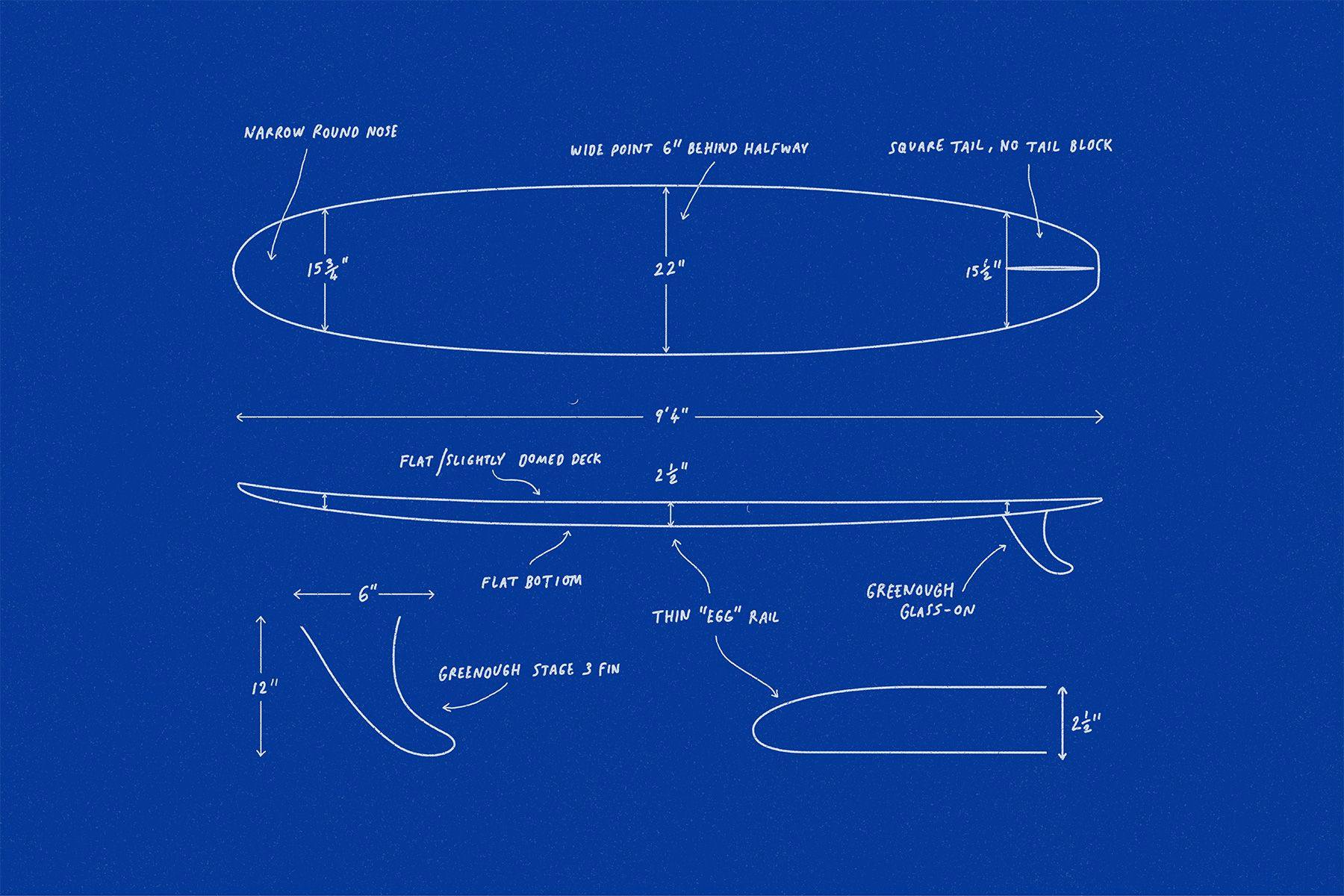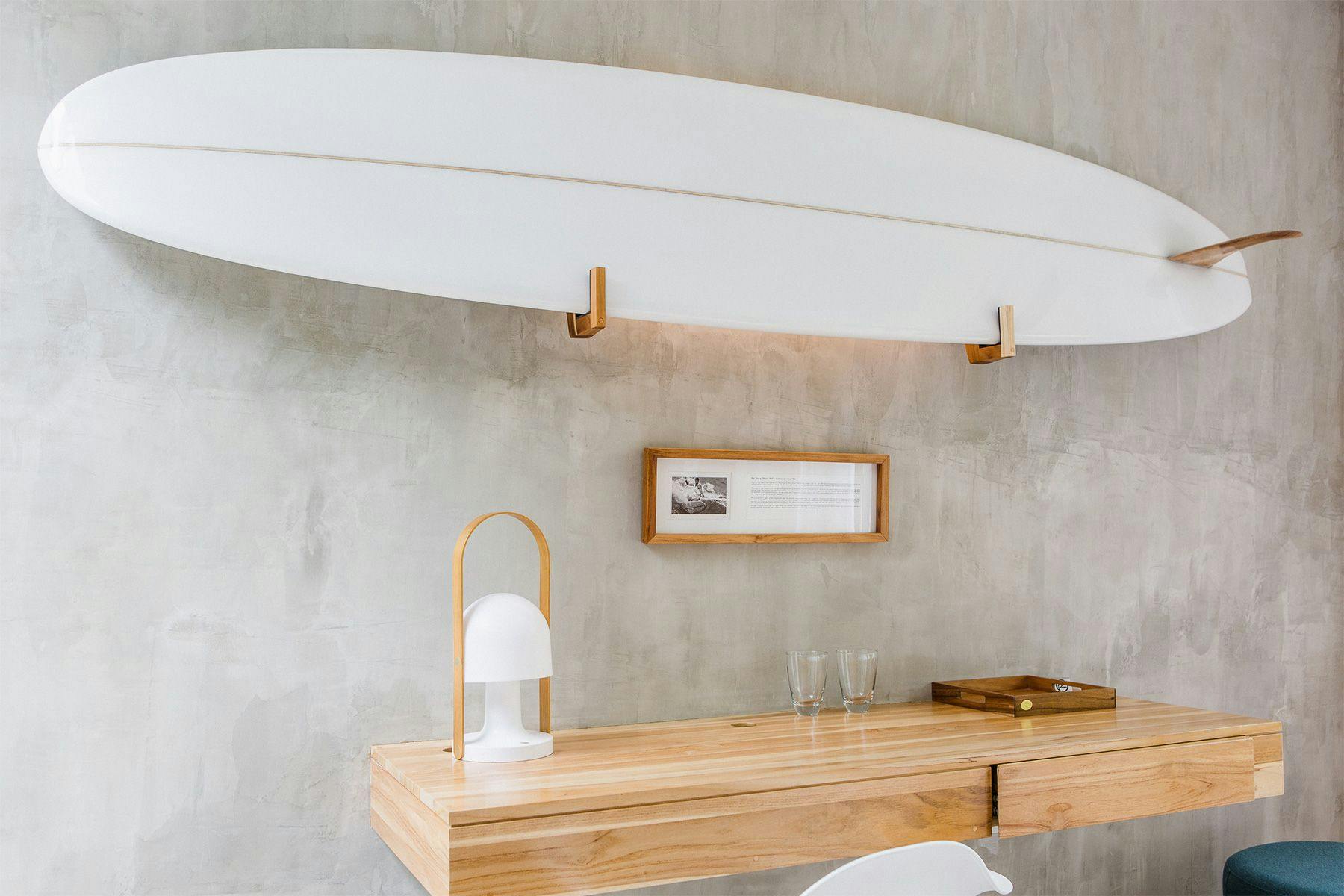SurfboardsThe History of Surfboard Design: Nat Young’s Magic Sam

Magic Sam was a short-lived yet essential design in the history of the surfboard – a transition model. Deeply influenced by his friends and fellow futurists Bob McTavish and George Greenough, and borrowing extensively from Velzy’s Pig template, Australian Nat Young designed and shaped Magic Sam in early 1966, taking it to California to win the World Title on later that year. Magic Sam was a tool for what the trio referred to as “total involvement surfing”, a step-change away from noseriding as the pinnacle of performance and towards more extreme manoeuvres. Beyond design developments, the Magic Sam model also established the role that Australian surfers and shapers played in the world of surfing – a boost that inspired their generation to dive further into experimentation that would lead in a short time to the shortboard revolution.
The Historical Context
Without any major material advancements in board-making since the introduction of polyurethane moulds in 1955, surfboard shapers of the early 1960s kept pace with and in-turn limited performance goals by fine tuning already established elements of design. Surfboards ranged on average between 9’4” to 10 feet in length and 21 to 22 inches in width – a mix of the Malibu Chip and Dale Velzy’s Pig, now with stringers. Noseriding had become ubiquitous in the surfing world to the point of changing the way that the media, contest judges, and surfboard manufacturers (with the new noserider models) saw the sport. Californian surfers such as David Nuuhiwa made the most of developments and refinements to maximise time spent on the nose. Meanwhile, in Australia, a small group of surfers (namely Bob McTavish, Nat Young, and visiting inspirational Californian kneeboarder and designer George Greenough) began to challenge the concept that surfing was solely about trim and noseriding – and that led to some radical experimentation with surfboard features. They were working on shorter versions of the Pig (between 9’ and 9’6”), of a similar width but drastically thinner, and most importantly each powered by one of Greenough’s signature flex fins. The 1966 World Championships in San Diego, California, marked a turning point both in the history of surfing and board design, with Young’s self-shaped Magic Sam – the embodiment of the Aussies’ progressive mindset – showing the world that noseriding wasn’t the only way to ride a wave well. This stepping-stone-surfboard consequently set the stage for the beginning of what would come to be called the shortboard revolution, and was the last surfboard to be ridden to victory in a world championship event before the craft that had until then been known simply as surfboards became categorised as either “shortboards” or “longboards”
Why Was This Development Necessary?
The pursuit of a surfboard that could surf tighter in the pocket with greater manoeuvrability was the driving force that led to the development of Magic Sam. This and subsequent models were a challenge to the status quo of what constituted “high performance” surfing. The standard style of surfing forced surfers to constantly shift from the speed-generating centre of the board to the tail in order to turn, so reducing the length and thickness of the board was necessary to allow greater acceleration and manoeuvrability without having to move up and down the length of the surfboard. Progressive surfers wanted to ride the waves more actively, deeper in the pocket, manoeuvre faster, and lose less speed in the process, and in light of that, the focus on the fin’s influence in performance was increased. These considerations were much more present in Australia than California during this period, where the Australian’s total involvement style contrasted with the more conservative and functional American mindset.

Who Was Involved?
Sydney-born Robert Young (nicknamed Gnat, before his fully-developed stature turned him into Nat) was the poster boy for the upcoming revolution in surfboard design. Radical both in and out of the water, Young’s abilities have granted him the title of one of the most influential surfers in history. He began surfing when he was 10 years old, dropped out of high school when he was 16, and placed second in the World Championships the following year in 1965. In 1966, he became World Champion. Young has tapped into nearly all strata of surfing: writing surf columns for newspapers, authoring books, modelling, appearing in documentaries and films (including both Endless Summer films), and shaping boards. Together with fellow-countryman Bob McTavish and Californian George Greenough, Young pioneered a new style of wave-riding, more radical and all-embracing, which was dubbed “total involvement” surfing. Magic Sam (the board that he shaped for himself and rode to victory in the 1966 World Championships) was the result of his pursuit of total involvement surfing and served as a precursor to the upcoming shortboard revolution. The original Magic Sam “disappeared during the post contest celebrations” in California and its whereabouts and fate remain a mystery.
Design Details
Magic Sam adopted the fundamental features of Velzy’s Pig design: a curved outline with a rounded nose that was narrower than the tail and the wide point set back from the board’s midpoint. At 9’4” long and 22” wide, Sam also retained the Pig’s square tail shape, flat deck, rolled bottom, and thin soft-turned-egg rails – all of which were features aimed at facilitating turning.
Manufactured out of a foam blank with a ½” redwood stringer at Gordon Woods Surfboards in Brookvale, Sydney, this model’s most radical design change laid in its thickness – just below 2 1/2” in contrast to the usual 3 1/2” – which decreased the overall volume and compromised flotation and paddle ability, but aided with manoeuvrability. When combining the relatively short length with thin profile, Young created a board that was highly sensitive to redirection, sinking and biting into the face of the wave more easily.
Also, for the first time since Simmons’ double-fin development, the fin became a prominent feature of the board’s design. The Magic Sam had one of George Greenough’s long, narrow, and flexible “Stage III” fins which resembled the dorsal fin of fast pelagic fish and which, much like a shark does when flicking its tail before take off, propelled the board through turns when pressure was applied on the fin as the board reached the bottom of a wave. This catch-release dynamic provided by the fin was primal in achieving the powerful manoeuvrability coveted by Young and his cohorts.

Specifications
Avg Minimum Avg Maximum Length 9’4” –
Width
Nose 15 ¾” – Midpoint 22” – Tail 15 ½” – Thickness 2 ½” –